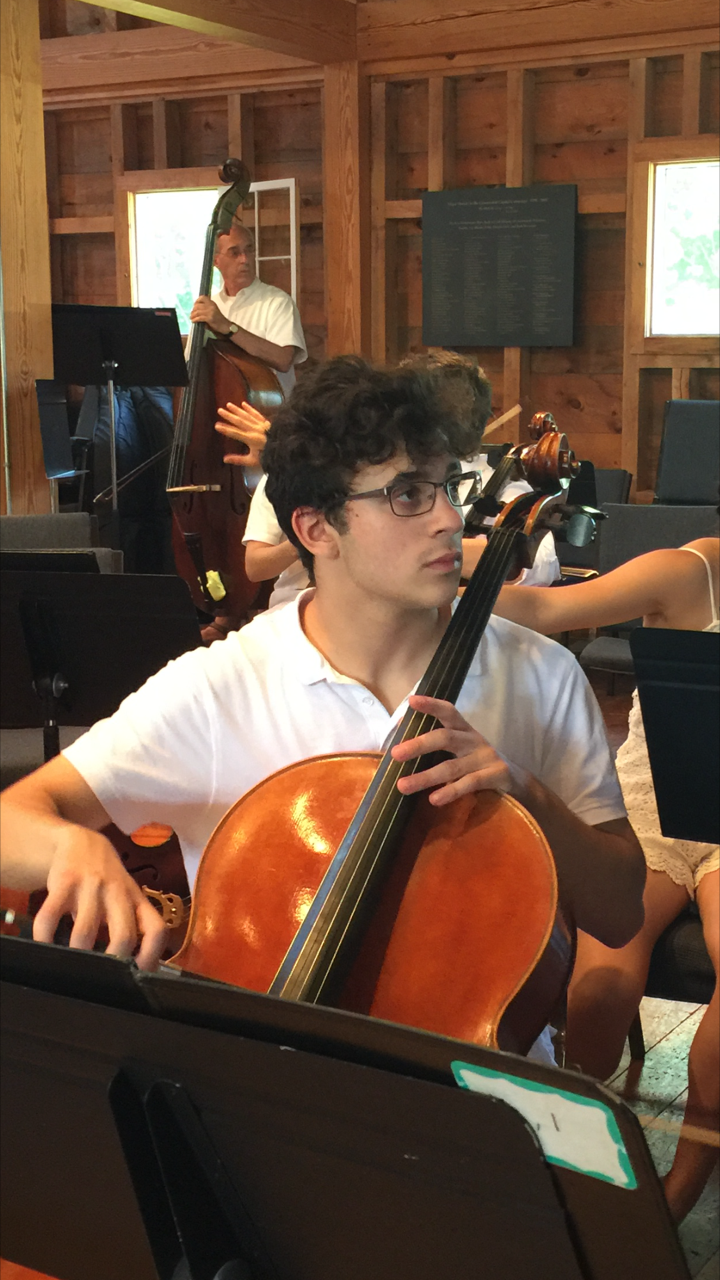We’re thrilled to welcome an array of musicians from the next generation(s) to the stage to join us for Legacy this weekend! Our NEC Fellow, Sophia Szokolay, our Project STEP Fellow, Mateo Vidali, and our two NEC Prep Competition winners, Katherine Feng and Julide San, all came to this concert as a result of slightly different AFC programs and paths - and now, we’re all making music together.
Canadian violinist Sophia Anna Szokolay (pictured above) made her international solo debut in 2013, touring with the Győr Philharmonic Orchestra and giving recitals in Hungary. She has since performed throughout Canada, the United States, and Europe, and as a soloist with the Toronto Sinfonietta, Etobicoke Philharmonic, Laurentide Festival Orchestra, Taylor Academy Chamber Orchestra, Scarborough Symphony, Toronto Symphony Youth Orchestra, and Boston Philharmonic Youth Orchestra. A passionate chamber musician, Sophia is a founding member of the Ivani Quartet, first prize winners at the Plowman International Chamber Competition and Bronze medalists at the Fischoff Chamber Music Competition in 2017. Festival appearances include the Taos School of Music, Juilliard String Quartet Seminar, Orford Musique, Holland Music Sessions, Bowdoin String Quartet Fellowship, Toronto Summer Music, and Banff Masterclasses. In her spare time, Sophia enjoys working with organizations in Boston such as the New England Conservatory Preparatory School as an orchestral coach and student manager, and the Eureka Ensemble as co-concertmaster.
Hailing from a multi-generation family of musicians, Sophia began her violin studies at the age of 3. At 13 she was invited to study with David Zafer, Professor Emeritus of the University of Toronto. Sophia graduated from the Royal Conservatory of Music Taylor Academy under the tutelage of Barry Shiffman and Victor Danchenko in 2015, and is currently pursuing a Bachelor’s Degree at the New England Conservatory, studying with Miriam Fried. Sophia plays on a 1679 Giovanni Grancino violin and Émile Ouchard bow, on generous loan from Tutti Violini.
Katherine Feng began her violin performance and music studies at the age of 5 at New England Conservatory Preparatory School. Since 2011, she has studied under Magdalena Richter. Previously, she studied under Susan Jarvis. She is currently a senior at the Lincoln Sudbury Regional High School.
Throughout her musical journey, Katherine has earned many accolades, including 1st Prize Bay State Competitions and 2nd Prize NEC Concerto Competition. She was the concertmaster for the Eastern District Orchestras, as well as numerous NEC Orchestras, including STO, SRO, JRO, and YRO. In 2016, Katherine's trio was invited to play in the Boston Chamber Music Society at MIT.
She is currently a member of NEC’s Youth Philharmonic Orchestra, and will be attending their upcoming tour to Central Europe this summer. In the past, she has toured with the Rivers School Orchestra to Venice and Croatia, and with the Youth Symphony to Ireland. This past summer, Katherine played alongside the Vienna Philharmonic Orchestra as the youngest member of their summer program in Austria.
In her free time, Katherine teaches violin at the Lincoln Middle School and plays in many community performances. In addition to her passion for music, Katherine has a love for the sciences and is working towards her black belt in Krav Maga.
Julide San is an 18-year-old Turkish-Singaporean double bassist. In 2017 Julide won second prize in the New England Conservatory (NEC) Concerto Competition, and went on to win the 2018 and 2019 A Far Cry / NEC Prep Competitions consecutively. She has performed in concert halls such as Carnegie Hall, New England Conservatory's Jordan Hall, Harvard University Sanders Theater, Oslo Konserthus, Grieghallen, and Stavanger Konserthus.
Julide was born in Singapore. She started learning the piano when she was six, and then progressed to playing the drums after she moved to Tokyo, Japan when she was eight years old. Her interest in the double bass came three years later, when she moved to Victoria B.C., Canada. Under the tutelage of Mary Rannie, the principal of the Victoria Symphony and Gary Karr, world famous double bassist, Julide discovered her passion for the double bass. In 2014, Julide joined Gary Karr's Karr Kamp as the youngest student ever to attend, at the age of 13, and returned to the camp again in 2016. In 2015, Julide was accepted to the prestigious Walnut Hill School for the Arts and moved to Natick, MA, from Toronto. She began her studies with Pascale Delache-Feldman at the NEC Preparatory Program and she currently studies with Lawrence Wolfe, NEC Studio Faculty and Assistant Principal of the Boston Symphony Orchestra. Julide has been a part of the Greater Victoria Youth Orchestra, Toronto Youth Wind Orchestra, and has been the principal bassist of NEC’s Youth Philharmonic Orchestra since she was 15 years old. Julide attended the Perlman Music Program in 2018. Julide’s hobbies include traveling, scuba diving, community service, writing for the International Society of Bassists Magazine and her school’s newspaper, as well learning new languages and busking.
Mateo Vidali is a 9th grader at Wachusett Regional High School in Holden, MA. He is a member of the Honors Quartet at Project Step and also plays in a quartet at NEC Prep. Mateo is in the Boston Philharmonic Youth Orchestra under the baton of Benjamin Zander. He studied for five years with Timothy Terranella at the Joy of Music in Worcester and currently is a student of Emmanuel Feldman at NEC Prep. Mateo spent a year living in Madrid, Spain where he studied with Eduardo Palao, Artistic Director of Cfest, an international cello festival in Puebla, Mexico. Mateo’s passion is playing chamber music and his home away from home is Greenwood Music Camp where he has been a camper for the past five summers. In his free time he loves to play ping pong, drink bubble tea, play Super Smash Brothers and spend time with friends. Mateo is extremely honored to be participating in this concert with A Far Cry!


















